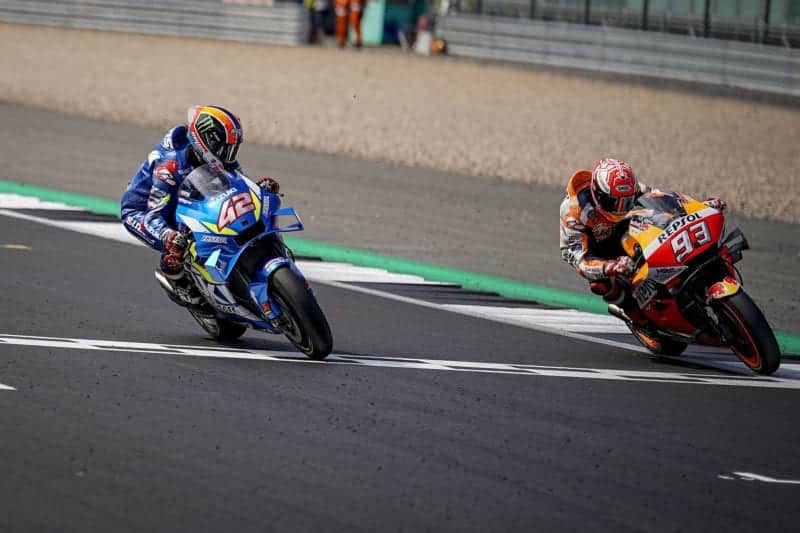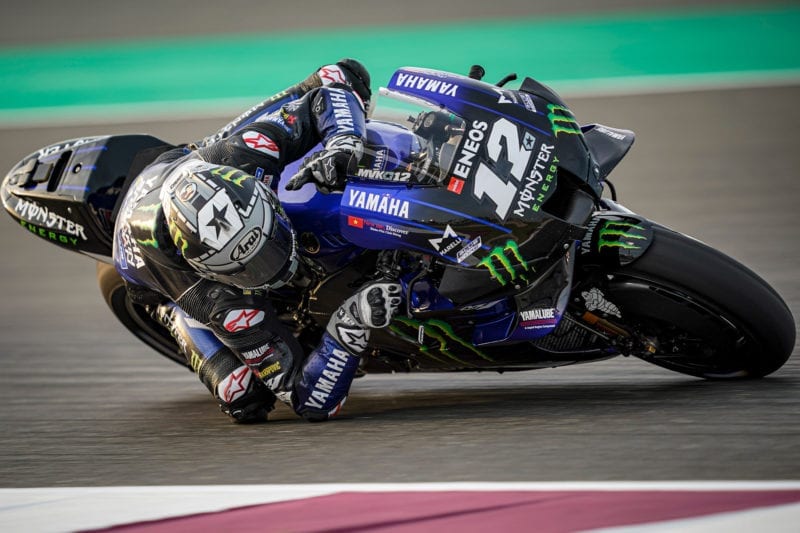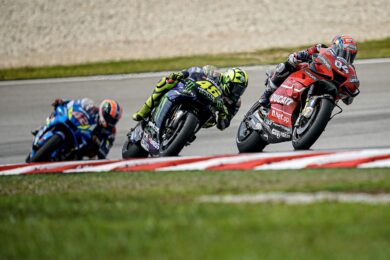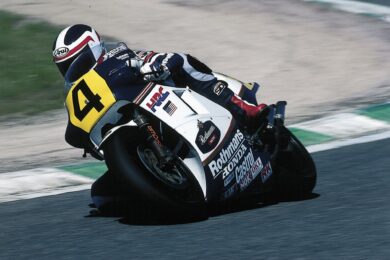A V4’s crankshaft is shorter, more rigid and runs on fewer bearings, which helps in the search for more power. An inline-four’s crankshaft is longer, which makes the bike more user-friendly through the corners.
“That’s why it’s the engine that gives an inline-four its superior line through corners, not the chassis,” says a former Yamaha engineer who now works for a rival factory.
But why?
It’s largely down to something called moment of inertia, which can most easily be explained like this…
Imagine you are walking along the top of a garden wall. Do you walk with your hands by your sides or do you spread your arms out? This is the principle: spreading mass further from the pivot point increases the moment of inertia, which minimises your body’s ‘rotation’ around the top of the wall, thereby giving you more stability and better balance.
By the same token figure skaters pull in their arms to reduce their moment of inertia in order to spin faster.
Now apply this thinking to a crankshaft (which is your stretched-out arms as you walk along that wall). A V4’s shorter crankshaft rotates around its longitudinal axis more easily than an inline-four’s longer crankshaft. This is why V4 MotoGP bikes are twitchier than inline-fours and therefore more demanding to ride.
We see it all the time: when a V4 gets sideways on the power it’s more of a handful than an inline-four in the same situation. This is because the V4’s crankshaft has a lower moment of inertia, which allows the crank to turn around its longitudinal axis more easily, making the bike unstable.

Álex Rins used his easy-handling Suzuki to beat Marc Márquez’s Honda at Silverstone last August
Suzuki
On the other hand the higher moment of inertia of an inline-four’s longer crankshaft is slower to turn around its longitudinal axis, so the bike reacts less violently to any loss of grip.
A longer crankshaft doesn’t just make an inline-four more stable accelerating out of corners, it makes the bike easier to ride in pretty much every situation.
An inline-four rides through corners faster and turns better through the neutral off-brakes/off-throttle phase, thanks to the self-righting force of its longer crankshaft. This makes the bike want to continue riding its line, without wanting to drop further into the corner or stand up out of the corner. This effect is similar to the behaviour of a motorcycle with a lot of trail.
This same effect of self-righting and of damping down unwanted movements also improves grip and helps on bumps, because the bike is more difficult to disturb from its chosen path.
These are important considerations, especially over race distance, because they make the bike less demanding to ride, both physically and mentally, which allows the rider to spend his energy on going as fast as he can, not on controlling the bike.
Now you know why riders like Johann Zarco, Jorge Lorenzo and others struggle when they switch from inline-four MotoGP bikes to V4s.
The other big positive of an inline-four MotoGP engine is its dimensions. An inline-four is shorter and more compact than a V4. This gives chassis designers a freer hand when they design the motorcycle, so they can get the centre of mass exactly where they want it, fore and aft, up and down.
Of course, inline-four MotoGP bikes do have their negatives, because too much of any positive in one direction usually turns into a negative in another, so nothing in race-bike design is all good.




